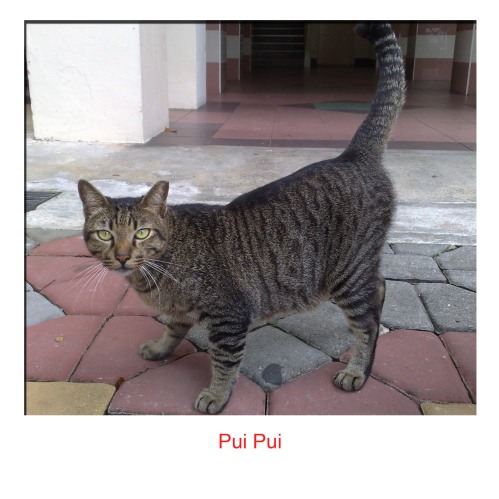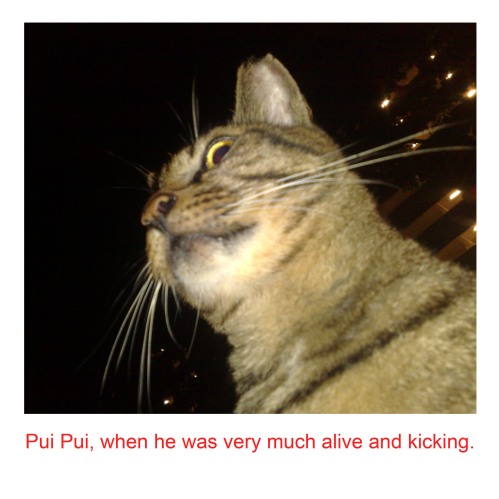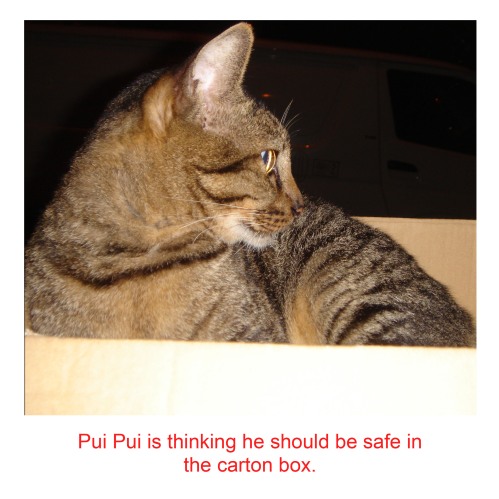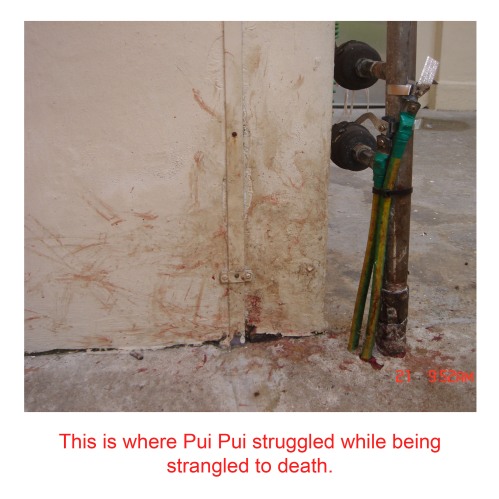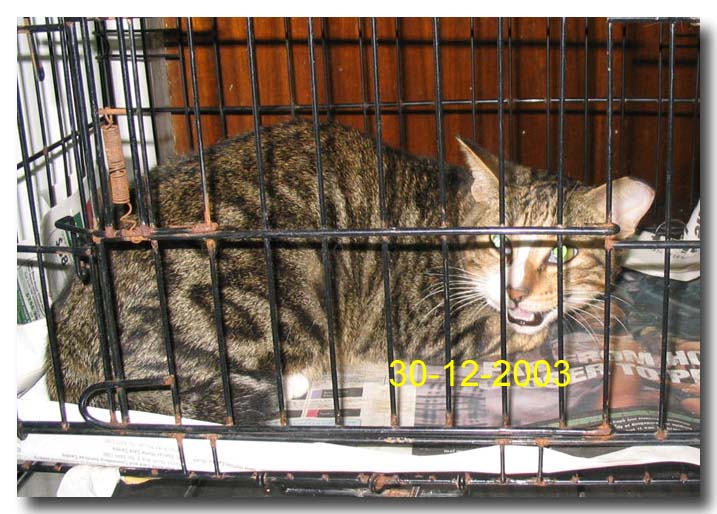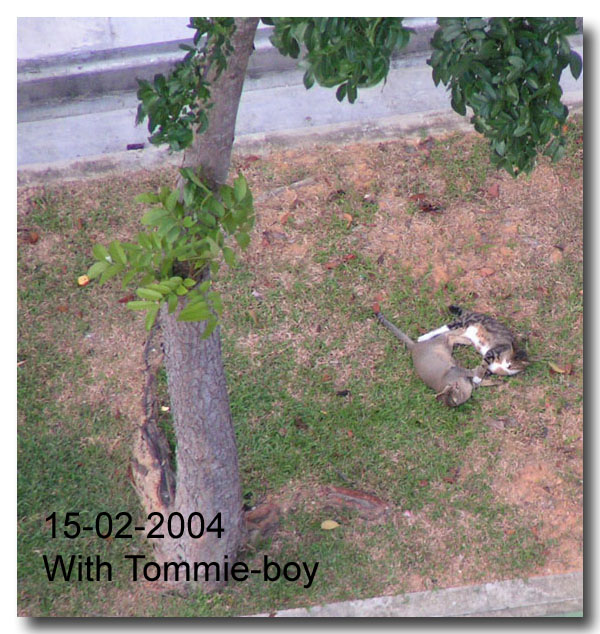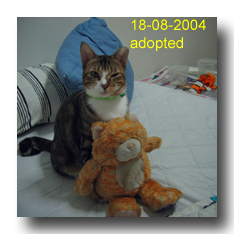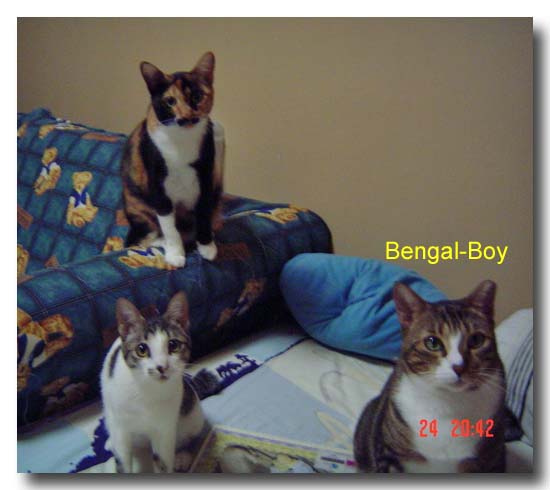 PROVIDER: Officer Sandra Magdaleno, who feeds and cares for the Southeast station cats, can describe each of her elusive crew: two black cats, two gray and whites, a tabby and a huge gray bruiser who hissed at everyone while in the cages where the cats acclimate. (Bob Chamberlin / LAT)The felines have been introduced, to great effect, at several stations with rodent problems. Parker Center may get them too.
PROVIDER: Officer Sandra Magdaleno, who feeds and cares for the Southeast station cats, can describe each of her elusive crew: two black cats, two gray and whites, a tabby and a huge gray bruiser who hissed at everyone while in the cages where the cats acclimate. (Bob Chamberlin / LAT)The felines have been introduced, to great effect, at several stations with rodent problems. Parker Center may get them too.By Carla Hall
Los Angeles Times Staff Writer
December 29, 2007
Learn the trick
They are the homeless of the domestic animal world -- colonies of feral cats that roam residential neighborhoods and lurk around office buildings and commercial garages, scavenging for food.
Unlike other strays that might rub up against a leg hoping for a crumb or a head rub, these felines are so unaccustomed to human contact that they dart away when people approach. Feral cats cannot be turned into house pets. When they end up in municipal shelters, they have little hope of coming out alive.
But one animal welfare group has figured out a way to save their lives and put them to work in Los Angeles.
The Working Cats program of Voice for the Animals, a Los Angeles-based animal advocacy and rescue group, has placed feral cats in a handful of police stations with rodent problems, just as the group placed cats in the rat-plagued downtown flower district several years ago -- to great effect.
Six feral cats were recently installed as ratters in the parking lot of the Los Angeles Police Department's Southeast Division, and another group will be housed at the Central Division early in the new year.
Their reputation as furtive and successful exterminators grew after feral cats were introduced to the parking lot of the Wilshire Division nearly six years ago. Rats had been burrowing into the equipment bags that bicycle officers stored in outside cages; inside the facility, mice were sometimes scurrying across people's desks.
"Once we got the cats, problem solved," said Cmdr. Kirk Albanese, a captain at the Wilshire station at the time. "I was almost an immediate believer."
After Albanese moved to the Foothill Division in the northern San Fernando Valley, he introduced feral cats to the building's mice-infested basement in 2004.
"I think it's a very humane way to deal with a very stubborn problem," said Albanese, now assistant to the director in the office of operations at Parker Center, which has its own rat problem.
The cats don't generally solve the rodent problem by killing rats and mice -- although the cats are game for doing so if they catch them. Rather, the cats simply leave their scent. Once rodents get a whiff of feline presence, like gangsters under a gang injunction, they move on."It's the smell of the cat and the cat urine," said animal rescuer Jane Garrison, a member of Voice for the Animals' board, who selected the half dozen feral cats for the Southeast station.Less grisly than glue traps -- and usually more effective -- the cats go about their "work" naturally: "They prowl, they eat, they sit in the sun," said Melya Kaplan, founder and director of Voice for the Animals, who was responsible for putting cats in the flower markets.
Sometimes they rest under police cars or on top of the warm car hoods. When the cats are new to an area -- as they are at Southeast -- they spend much of their time hiding from view.
"They've got to play it safe and see if they're OK," said Southeast Officer Sandra Magdaleno, who feeds and cares for the cats.
Magdaleno, who has been rescuing animals for 25 years, can describe each of her elusive crew: two black cats, two gray and whites, a tabby and a huge gray bruiser who hissed at everyone during his days in the holding cages that the cats are confined to while they acclimate. When his cage was opened, the big bad boy timidly looked out.
"He jumped out of the cage and looked around, then he heard a car and jumped back in," said Magdaleno.
"You're like the cat whisperer," Officer Mark Miraglia deadpanned.
Garrison worked with two shelters to select the most feral cats possible. (If a cat suddenly gets friendly, the animal is pulled from the pool and, with any luck, is adopted.) The cats were then spayed or neutered, vaccinated, micro-chipped and ear-tipped (under anesthesia while the cats are being altered, vets notch an ear tip, the widely recognized sign that a cat is altered).
Then the cats were moved to the Southeast Division, put in large wire holding cages and housed in a shed for a month for the process of re-colonizing.
"You can't just take feral cats and put them in one location and expect them to stay," Kaplan said. "A feral cat will kill himself trying to get back to his old location."
According to Garrison, it takes about 30 days for a feral cat to be comfortable enough to consider a new location home turf.
Garrison said the Working Cats program can be used anywhere. "We are willing to put cats in any safe area -- businesses, hotels, industrial parks, even residences -- and we will do that for free."
Soon the ferals may get a chance to work their magic on the legions of rats that make their home behind Parker Center. "They're coming out of everywhere," said Officer April Harding, who works in media relations. "One time I stood in the parking lot and just watched in horror, like it was a movie."
Thom Brennan, commanding officer of facilities management for the LAPD, said he was still figuring out the logistics of placing cats at Parker Center. "Nobody was more skeptical about it than I was," he said. "It sounds like too easy a fix. But everywhere it's been done, it's worked. . . . I think I'm convinced it's a viable program that will help us."
At Southeast, the cats were released from their cages in late November. They hide themselves in the station's expansive parking lot, which is dotted with storage sheds, trees and bushes, not to mention dozens of cars under which to slink.
Magdaleno has a knack for spotting the felines. On a recent crisp afternoon, she spied one sunning itself against a wall behind a police cruiser. But like a celebrity in a reclusive mood, the feline dashed away as soon as a photographer trained a long lens on it. The officer pointed toward another row of cars; within minutes, a sleek black cat with yellow eyes trotted across the parking lot glancing in the direction of its watchers without breaking stride.
Magdaleno keeps the feeding station well-stocked with wet and dry food. Initially the cat installers brought provisions. Now it falls to the officer to buy food, which costs her more than $100 a month.
"That is a glitch right now," Kaplan said. "I'm working with the LAPD to put that in their budget."
But Magdaleno is so devoted to the cats that during a recent vacation, she drove back to the station from her home in Temecula -- where she lives with three dogs, two cats, three cockatiels and one husband -- to check on the ferals.
She gets some teasing from colleagues, who, nonetheless, have a penchant for rescuing animals in the area.
"I'm more of a dog guy," said Miraglia, "but I try not to hit the cats when I drive out. Does that count?"
Albanese said there has never been a shortage of people willing to care for the cats at any station where he has worked.
"If I were a wild cat, that would be a great job," he said. "Your meals are there, your housing is there, you're at a police station so you're safe."
For more information on "working" feral cats, go to http://vftafoundation.org/workingcats.htm.
carla.hall@latimes.com













